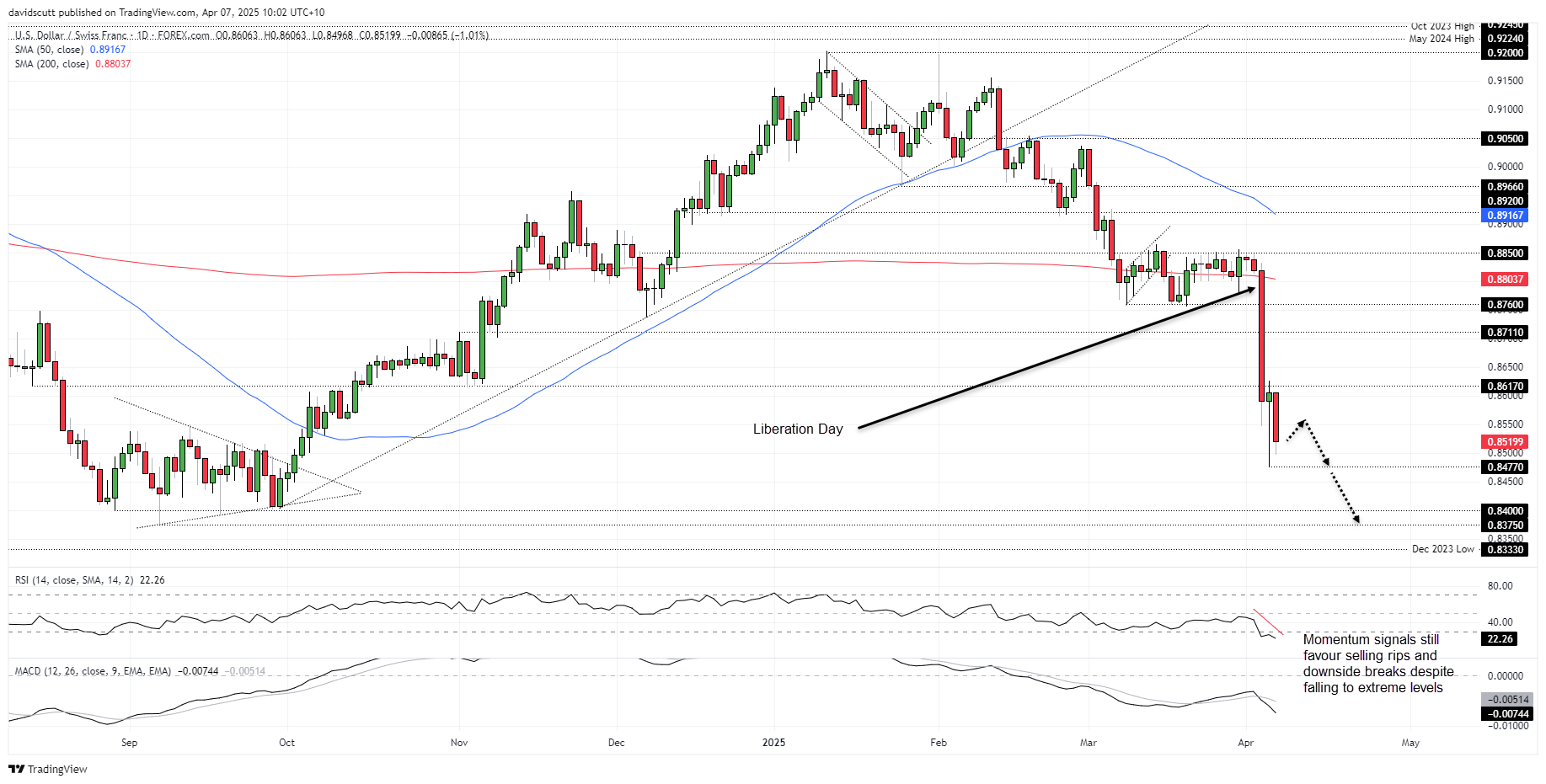- Risk aversion and yield compression drive capital into the franc
- Trump's tariff policies add fuel to the USD/CHF downside move
- Oversold, but momentum favours further weakness
Rampant risk aversion sparked by growing U.S. recession fears continues to see capital flock to the Swiss franc, delivering on the downside risk flagged for USD/CHF last week following a collapse in yield differentials between the United States and Switzerland.
While the preference remains to sell rallies and downside breaks, given the skittish market environment, those trading the pair must ensure risk management is at the forefront of their thinking. USD/CHF has already fallen a long way, making it vulnerable to sudden squeezes on any hint that U.S. recession fears are ebbing. We’ve yet to see any such evidence, but headline risk is elevated entering the new week.
USD/CHF: Selling Rallies Favoured
The response to Donald Trump’s ‘Liberation Day’ tariff announcement shifted directional risks for USD/CHF dramatically, helping drive a break of support at .8760 that snowballed in the period since, eventually seeing the pair bottom at .8477 before bouncing into the close on Friday.
The price action seen in early Asia on Monday suggests that move was driven by weekend hedging to guard against unexpected bullish news, with Friday’s bullish hammer now invalidated by the steep bearish reversal seen on the open.
Source: TradingView
Bears will now be eyeing Friday’s low of .8477, with a break of that level opening the door for a run towards a key support zone starting at .8400 and extending to the December 2023 low of .8333.
On the topside, .8617 remains valid even with the recent carnage, coinciding with where the USD/CHF rebound stalled on Friday. Some selling pressure may also be found at .8550.
RSI (14) is trending lower but has fallen into oversold territory, adding a cautionary disclaimer to the overall bearish signal. However, being oversold does not mean the pair is about to embark on a massive reversal. MACD continues to trend lower after crossing below zero earlier this month, confirming the bearish signal. The momentum picture, therefore, favours selling rallies and downside breaks.
As discussed in this week’s USD/JPY outlook note, known risk events like data and central bank speeches are likely to be a distant secondary consideration for markets this week. It’s primarily about price action and managing headline risk near term.
